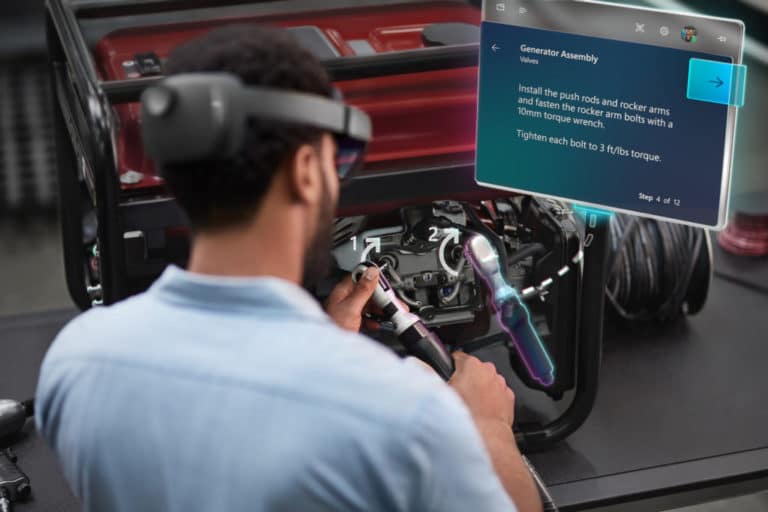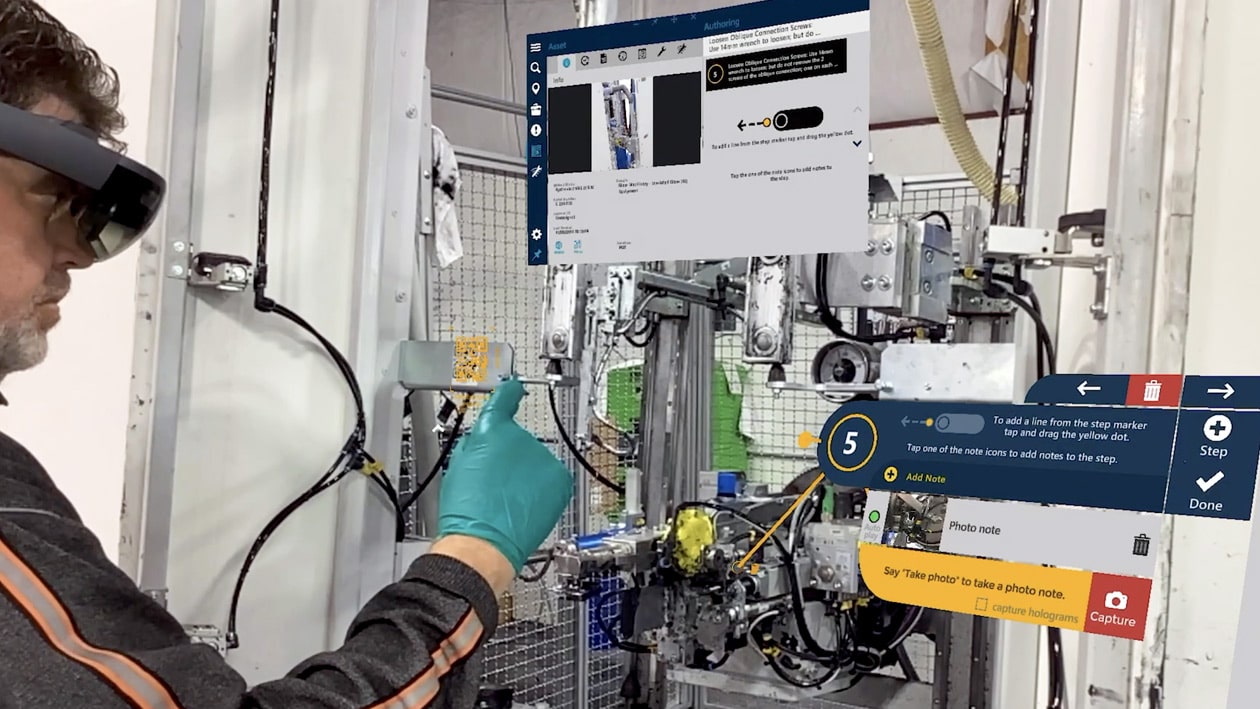
5G Will Unleash the Power of Enterprise AR
by Kelly Malone
Consumer marketing of 5G feels ubiquitous. While 5G will eventually deliver significant benefits to consumers, enterprises will be first to realize the technology’s advantages. The combination of edge computing, 5G devices and network coverage will create a tipping point for an enterprise cellular market that will become as ubiquitous as Wi-Fi is today. And AR will be the poster child for 5G’s benefits.
Backing up, the sprawling footprints of industrial organizations beg for technology like 5G. High-speed cellular coverage will be available throughout dispersed industrial environments that can’t be served by Wi-Fi alone. And 5G cellular connectivity for field-based use cases — including AR platforms that help front-line workers keep complex machinery in good working order — will realize ample value.
There are also many enterprises that haven’t deployed wireless infrastructure for cost or security reasons. But the recent adoption of mobile digital tools by front-line workers to perform daily tasks makes 5G a valuable investment for those very organizations. 5G may even be easier to deploy and deliver more functionality than new Wi-Fi in many cases.

Meeting the Moment
AR adoption has been accelerated in 2020 as Covid-19 has monumentally disrupted enterprises, including employee health and operational capabilities. For one, AR can enable remote work for frontline workers. And 5G, in turn, makes AR systems faster, more secure, and resilient.
Yet, Covid-19 is only the latest in a series of disruptions that could impact industrial operations. In fact, the only constant in business is the inevitability of more disruption. Executives are turning to technologies like AR to make their companies more resilient and capable of handling disruptions. And 5G is the force multiplier that will unlock its potential.
Maximizing expertise within organizations is also an enterprise priority supported by AR, and optimized by 5G. When new employees are hired, there’s a natural lack of knowledge and experience that must be overcome. Using AR to capture the knowledge of seasoned experts and distribute it to new staff, regardless of location, will greatly benefit organizations.
Real-Time Communication
Content is king as the saying goes, and this holds true for enterprise AR. Furthermore, 5G’s throughput capabilities will deliver real-time access to the rich media required by enterprise AR apps. That will include data-intensive content like line-of-sight instructions that lead front-line staff through complex repair procedures and robust content delivered through holograms.
In that sense, 5G will enable real-time voice, video and augmented content. For example, 5G will unlock two-way video, real-time remote guidance, and access to intelligent cloud repositories where knowledge is stored. This will in turn empower less-experienced workers to safely, efficiently, and thoroughly complete complex tasks on site.
Speed is also a key factor as enterprise AR often involves video that must be seamless. Latency and bottlenecks degrade that experience and could ultimately lead to AR’s underutilization. 5G is the answer, given its distributed architecture that brings computing power to the edge of the network, decreases latency, and provides dedicated bandwidth where and when it’s needed.

Winning Combination
One example of 5G’s enabling power is network slicing. This is the allocation of bandwidth to mission-critical applications, prioritizing them over less-important functions during periods of high network traffic. This can prevent essential equipment downtime during a Denial of Service (DoS) attack.
Integrating AR with Internet of Things (IoT) technologies will likewise benefit from 5G. For example, incorporating sensors into legacy equipment can provide transparency for front line workers to access data from any on-site location.
5G’s latency reduction noted above will also benefit IoT sensors that monitor machines where milliseconds matter. That can be the case in the prevention of industrial accidents that damage equipment and harm workers. 5G will enable the deployment and connection of more sensors, which in turn creates greater transparency and machine learning to inform preventative-maintenance tasks.
Security also benefits, as 5G advances device authentication, encryption of traffic between devices, and other security protocols.
From Manufacturing to Military
The bottom line is that advanced enterprise AR application developers and their customers will immediately benefit from 5G’s flexibility, reliability, and adaptability. This will happen across the enterprise landscape in industries ranging from manufacturing to military.
Consumer applications of 5G may be the sizzle, but enterprises investing in 5G-fueled AR are getting the steak.
 Kelly Malone is Chief Customer Success Officer at Taqtile.
Kelly Malone is Chief Customer Success Officer at Taqtile.

